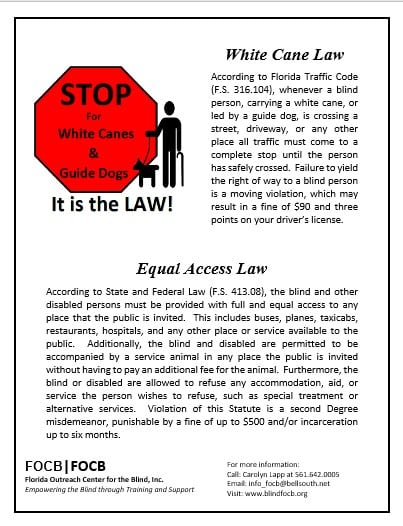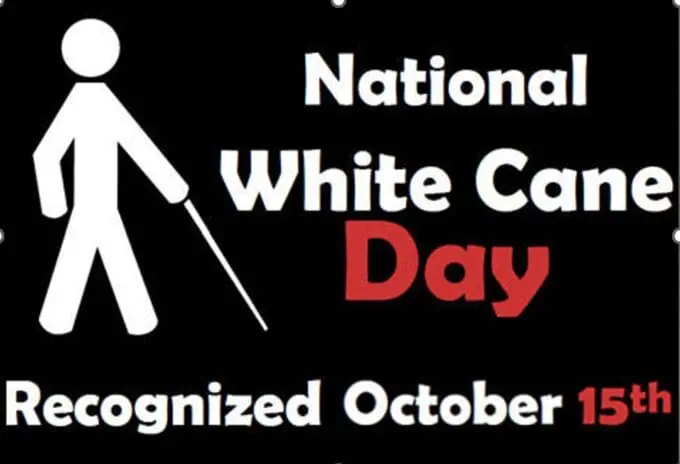Introduction to White Cane Awareness Day
White Cane Awareness Day is a significant event that aims to recognize and support individuals who are visually impaired or blind. Observed annually on October 15, this day emphasizes the importance of the white cane as a tool for independence and mobility for those with visual impairments. As society evolves, it’s crucial to foster understanding and acceptance of the challenges faced by individuals with disabilities.
History of White Cane Awareness Day
The history of White Cane Awareness Day dates back to 1964 when President Lyndon B. Johnson proclaimed this day as a national observance to honor the achievements of visually impaired individuals. The white cane has long been a symbol of independence, enabling its users to navigate their surroundings safely and effectively. Since then, various organizations have been instrumental in advocating for the rights and visibility of those with visual impairments, leading to a broader societal understanding and acceptance.
Importance of Raising Awareness
Raising awareness about White Cane Awareness Day is essential for increasing public knowledge about the capabilities of visually impaired individuals. This observance plays a vital role in dispelling misconceptions, fostering inclusion, and encouraging communities to become more accessible for everyone, regardless of their abilities. By promoting positive engagement and understanding, society can create a more supportive environment for individuals relying on white canes.

Understanding White Canes
Purpose of White Canes
The primary purpose of a white cane is to enhance mobility and independence for individuals who are visually impaired or blind. This tool not only assists users in detecting obstacles in their path but also serves as a signal to others that the individual has a visual impairment. As a result, the white cane plays a crucial role in ensuring safety and promoting confidence among its users. It empowers them to navigate various environments with greater ease, allowing them to participate more fully in everyday life and activities.
Types of White Canes
There are several types of white canes, each designed to meet specific needs. The standard white cane is commonly used for detecting obstacles and provides feedback to the user about their immediate surroundings. Another type, the support cane, offers additional stability and physical support, similar to a traditional mobility cane. Additionally, there are electronic canes equipped with sensors that detect obstacles and provide auditory or vibrational feedback. These different canes can enhance the mobility experience for individuals with varying levels of visual impairment, helping them achieve newfound independence while fostering confidence as they move through their communities.

Significance of White Cane Awareness
Promoting Independence
Raising awareness about the white cane is vital for promoting independence among individuals with visual impairments. When society understands the significance of the white cane, it fosters a more inclusive environment where the needs of all individuals are respected. This awareness helps to dismantle stereotypes and misconceptions regarding blindness, paving the way for acceptance and support. As more people recognize the role of the white cane, they can better appreciate the abilities and aspirations of visually impaired individuals, leading to enhanced opportunities and increased participation in the community.
Advocating for Accessibility
Furthermore, promoting white cane awareness contributes to advocating for improved accessibility in public spaces. When community members are educated about the challenges faced by those who use white canes, they are more likely to support initiatives aimed at creating an accommodating environment. This can include better-designed sidewalks, improved signage, and training for public service personnel on how to assist individuals with visual impairments. By raising awareness and encouraging dialogue, society can work towards a future where independence and accessibility are prioritized, ensuring that everyone, regardless of their visual ability, can thrive within their communities.

Events and Activities on White Cane Awareness Day
Workshops and Seminars
On White Cane Awareness Day, communities often host workshops and seminars that educate the public about the significance of the white cane. These events provide valuable information regarding the proper use of the white cane and how it aids individuals with visual impairments in navigating their environments. Experts and advocates share personal stories and insights, making the experiences of visually impaired individuals more relatable to the audience. By participating in these educational sessions, attendees gain a deeper understanding of the challenges faced by people who rely on white canes, fostering empathy and support within the community.
Community Outreach Programs
In addition, community outreach programs play a significant role in celebrating White Cane Awareness Day. Local organizations and schools may organize events, including demonstrations, walks, or exhibitions showcasing the importance of the white cane. These activities encourage residents to engage with visually impaired individuals, promoting an atmosphere of respect and inclusion. Through these events, communities can emphasize not only the necessity of the white cane but also highlight the capabilities and contributions of individuals with visual impairments. Ultimately, these initiatives contribute to a more supportive and accessible environment for everyone, regardless of visual ability.

Supporting the Visually Impaired Community
Volunteering Opportunities
On White Cane Awareness Day, individuals can actively contribute by volunteering their time and skills to support organizations focused on assisting the visually impaired community. These organizations often seek enthusiastic volunteers to help with a variety of tasks, such as organizing events, providing companionship, or offering guided assistance to individuals navigating their environments. By volunteering, people not only gain valuable insights into the experiences of visually impaired individuals but also become advocates for inclusion and accessibility. It fosters a sense of community and understanding, encouraging participants to engage in meaningful interactions with those they are helping.
Donating to Relevant Organizations
Another impactful way to support the visually impaired community is through donations. Various non-profit organizations work tirelessly to enhance the quality of life for individuals with visual impairments. By contributing financially, individuals can help fund essential services such as mobility training, rehabilitation programs, and educational resources. Donations can make a substantial difference, allowing these organizations to continue their crucial work in empowering visually impaired individuals. Ultimately, both volunteering and donating reinforce the message of White Cane Awareness Day, which emphasizes awareness, understanding, and support for the visually impaired community.

Global Observance of White Cane Awareness Day
Initiatives in Different Countries
Across the globe, White Cane Awareness Day is marked by various initiatives tailored to raise awareness about the challenges facing visually impaired individuals. For example, in the United States, organizations often host community workshops aimed at educating the public about the significance of the white cane and the rights of those who rely on it for navigation. Meanwhile, countries like Canada arrange for public demonstrations to showcase mobility training techniques, aiming to illustrate the independence and capabilities of visually impaired individuals. These initiatives serve not only to inform the public but also to celebrate the resilience and contributions of the visually impaired community.
International Partnerships
Many organizations are forming international partnerships to strengthen outreach efforts for White Cane Awareness Day. These collaborations enhance resource sharing and unify efforts to advocate for laws that support accessibility for visually impaired individuals. By joining forces, organizations can implement broader campaigns that educate society about the needs and rights of visually impaired persons. Together, they can develop inclusive policies and programs while fostering a sense of solidarity within the global community. As awareness continues to grow, so too does the potential for creating a more inclusive world for individuals with visual impairments.

Looking Ahead: Future of White Cane Awareness
Innovation in Assistive Technology
As society progresses technologically, innovation in assistive devices continues to evolve, bringing new possibilities for individuals who rely on the white cane. Upcoming trends include the integration of smart technology within canes, such as obstacle detection systems and GPS navigation features. These enhancements not only aid in physical navigation but also empower visually impaired individuals to explore their environments with greater confidence and independence. Developers are collaborating with visually impaired users to ensure these innovations meet real-world needs, creating tools that genuinely facilitate daily activities and promote enhanced mobility.
Continued Advocacy Efforts
Ongoing advocacy for the rights and recognition of visually impaired individuals is crucial for the successful observance of White Cane Awareness Day. Organizations are committed to lobbying for policies that enhance accessibility in public spaces and transportation systems. Awareness campaigns focused on educating the general public about the significance of the white cane will continue to be vital, encouraging communities to foster inclusion. These endeavors not only provide essential information but also aim to dismantle stereotypes and reduce stigma associated with visual impairments. By uniting efforts in advocacy and technology, the future looks promising for enhancing the quality of life for visually impaired individuals globally.

